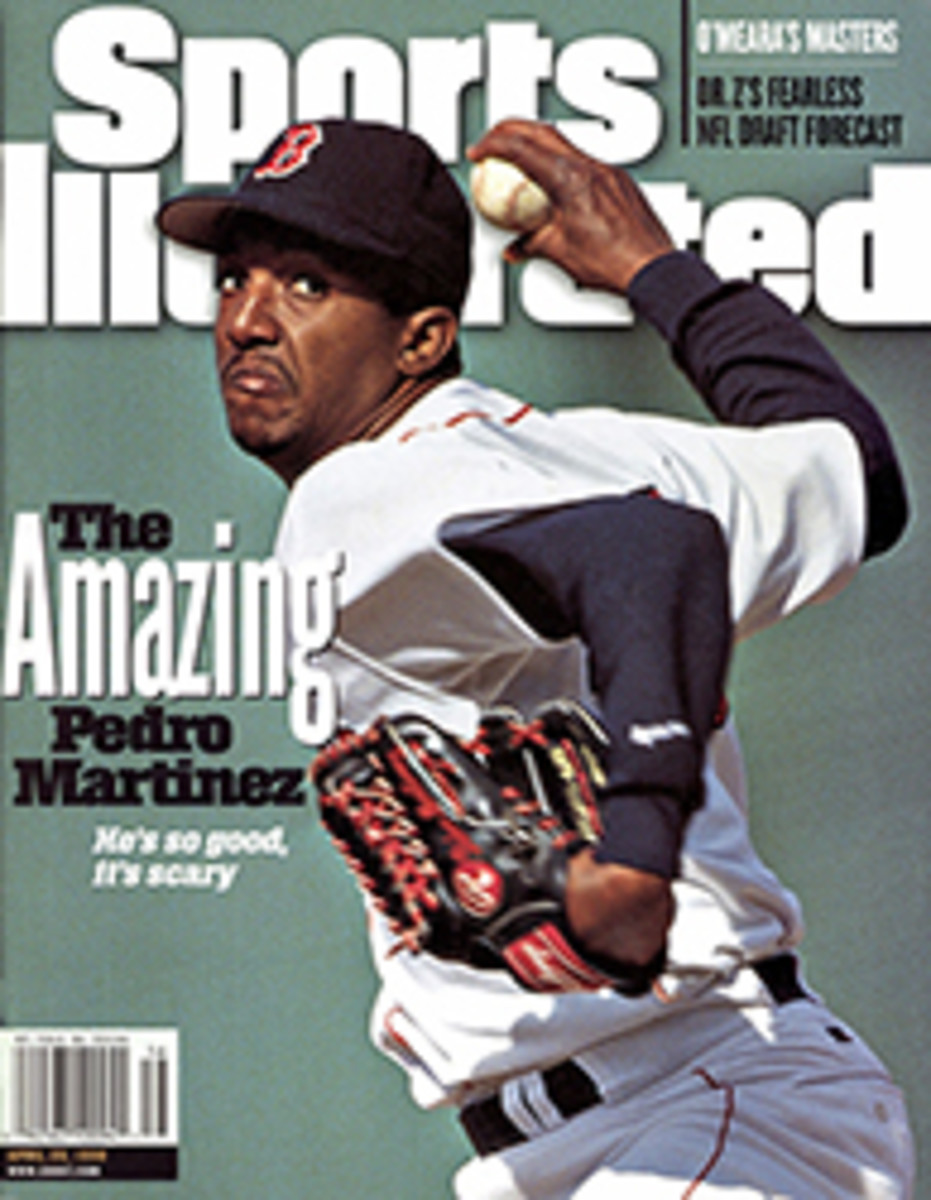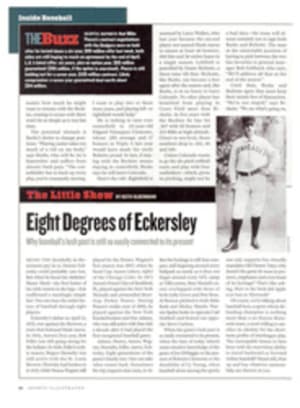
The Lost Treasure Of Bobby Jones Digging through a cache of long-forgotten papers, the author unearthed an unpublished series of photos and instruction in the hand of the greatest golfer of them all
This is the story of a small black box and its contents. By
small I mean maybe four inches by seven inches and three inches
deep. When I first saw the box, it had several old rubber bands
around it--real rubber bands, not the synthetic kind, dating
probably to the 1930s. The box was from a larger cardboard
carton, one of about 20 that lined the wall behind me.
It was a spring morning in 1995, and I was alone in a conference
room at the Atlanta law firm of Alston & Bird. I was researching
a book, which I have since published, titled Bobby Jones: The
Greatest of Them All, and the trail had led me to Atlanta and
the firm, which was established by Robert Tyre Jones Jr. while
he was still playing tournament golf.
There was a real sense of history in the room. Whenever I looked
up from the long, polished table where I worked, I gazed upon
some striking Jones artifact. The walls were covered with framed
photographs: Jones as a child; Jones in a rain slicker in 1927,
his hand on the U.S. Amateur trophy; Jones with President
Eisenhower. On the far wall hung an original architectural
rendering of the Augusta National Golf Club, signed by Jones's
codesigner, Alister Mackenzie.
There were also the boxes of Jones memorabilia that his family
and firm had generously said I could look through. The legal
documents didn't interest me, but there were hundreds of
photographs, newspaper clippings and letters from people Jones
had met during his remarkable life.
Then I came upon the black box. I took it out of the carton,
pulled off the rubber bands and opened the top. Inside was a
stack of photos, maybe 150 in all, of Jones swinging golf clubs.
It was obvious that the pictures were taken for instructional
purposes, and each was numbered on the back. Also in the box was
a sheaf of pages torn from a yellow legal tablet. The pages were
headed with the words Grip, Putting, The Woods, Long Irons,
Short Irons, Bunker Play, etc. Below had been written, in
pencil, the numbers of the pictures and, next to each number,
brief comments about swing mechanics.
I couldn't believe what I was looking at. I felt like Howard
Carter, the fellow whom Lord Carnarvon bankrolled in the '20s to
help him find King Tut's tomb. If you remember the story, they
found the tomb in Egypt's Valley of the Kings, dug their way
down to the burial vault and reached a stone wall. They pulled
out a single stone, and Carter leaned in with a candle, the
first person in over 3,000 years to gaze upon the gold
sarcophagus and all the treasures the grave robbers had never
gotten to. Lord Carnarvon, peering anxiously over Carter's
shoulder, said, "What do you see?" Carter said, "Wondrous things."
I felt the same excitement. I was holding something like lost
treasure, something that probably hadn't been looked at for more
than 60 years. I recognized Jones's handwriting, and I knew from
all the research I'd done that the photos had never been
published. The pictures were sharp, for the most part, and
Jones's prose was extremely descriptive and efficient. There
were some cross-outs, but one thing was obvious: It was the
master's own words in his own hand.
Returning to the larger box, I discovered a viewfinder and six
filmstrips. The strips corresponded to the swing photos and fit
into the viewfinder, so it was pretty clear that Jones had
created these strips for one of his day's alternative media.
Anyway, I knew that I wanted to do something with this rare
find. The Jones family gave me permission to publish the photos
and instruction, but I wasn't sure how to proceed. I didn't want
to change a word of what Jones had written, but I thought the
concepts should be updated. I showed Ben Crenshaw, the two-time
Masters champion, my find, and we decided to photograph him in
the same positions as Jones and then have Ben provide a modern
commentary on his technique. The result of our collaboration,
Classic Instruction ($25, The American Golfer and Broadway
Books), is to be released next month.
Ben has an amazing eye for detail. He looked at a close-up of
Jones's grip and said, "He must have had tendinitis." I studied
the picture, which I had been looking at for two years, and sure
enough, Jones's righthand middle finger was noticeably swollen.
It was Ben's idea to have our art director, in the putting
photos, drop a dotted white line from the player's eyes
perpendicular to the ground. Ben said, "Many teachers today
teach 'eyes over the ball,' but I say you want your eyes to be
inside the ball." When we drew lines from their eyes to the
ground, both Jones and Crenshaw were in the same position--eyes
above the putter hosel, not the ball. Jones, of course, was one
of the greatest putters ever, and Ben certainly belongs in that
company, too.
As I see it, these rediscovered photographs and writings are a
sort of Rosetta stone for golfers. There is much for the modern
player to learn from this material and much to admire in the
photos themselves, which are like a journey through time. I
still shake my head over the fact that these treasures lay
hidden for decades in that little black box. Wondrous things,
indeed.
COLOR PHOTO: GABE PALACIO [Bobby Jones' instructional photographs and handwritten notes]
COLOR PHOTO: GABE PALACIO RARE FIND Davis felt like the man who discovered King Tut's tomb. [Martin Davis]
B/W PHOTO 1 [Bobby Jones holding driver]
COLOR PHOTO 1 [Handwritten description of driving stance]
B/W PHOTO 2 [Bobby Jones backswinging driver]
COLOR PHOTO 2 [Handwritten description of backswing]
B/W PHOTO 3 [Bobby Jones completing backswing of driver]
COLOR PHOTO 3 [Handwritten description of completing backward wind-up]
B/W PHOTO 4 [Bobby Jones downstroking driver]
COLOR PHOTO 4 [Handwritten description of downstroke]
B/W PHOTO 5 [Bobby Jones striking golf ball with driver]
COLOR PHOTO 5 [Handwritten description of driver striking ball]
B/W PHOTO 6 [Bobby Jones following through after driving golf ball]
COLOR PHOTO 6 [Handwritten description of flight of ball]
B/W PHOTO 1 [Bobby Jones holding putter]
COLOR PHOTO 1 [Handwritten description of putting posture]
B/W PHOTO 2 [Bobby Jones backswinging putter]
COLOR PHOTO 2 [Handwritten description putting backswing]
B/W PHOTO 3 [Bobby Jones following through after putt]
COLOR PHOTO 3 [Handwritten description of putting follow-through]
B/W PHOTO 1 [Bobby Jones holding sand wedge]
COLOR PHOTO 1 [Handwritten description of chipping procedure]
B/W PHOTO 2 [Bobby Jones backswinging sand wedge]
COLOR PHOTO 2 [Handwritten description of chip stroke]
B/W PHOTO 3 [Bobby Jones following through with sand wedge]
COLOR PHOTO 3 [Handwritten description of risk involved in chipping]
I was holding something that probably hadn't been looked at for
more than 60 years.

